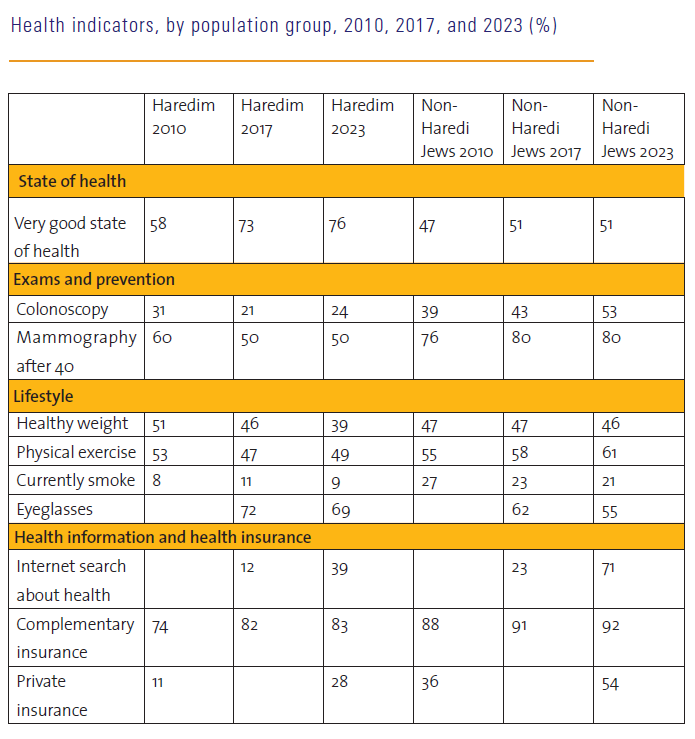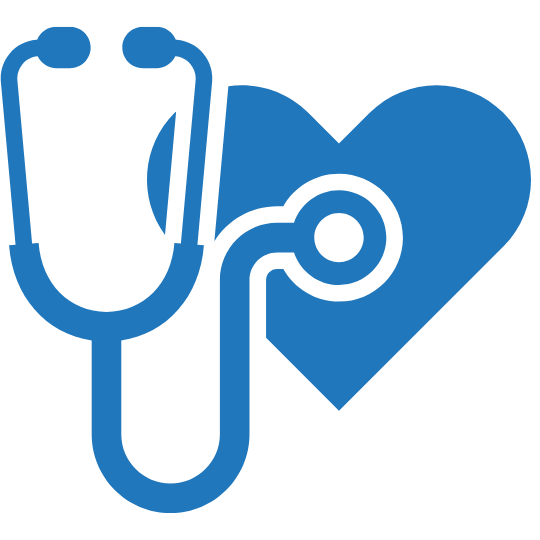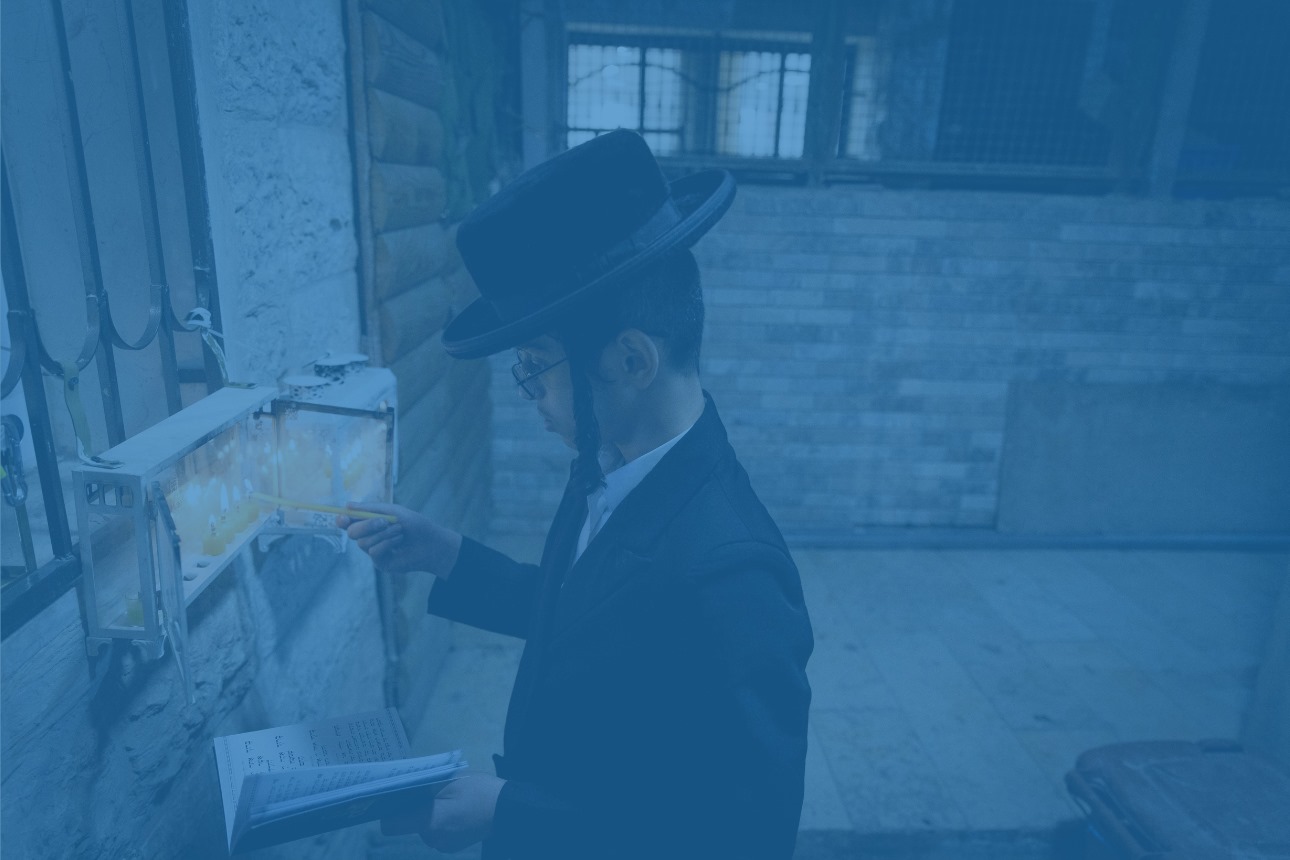Health
Chap. 6
Some 76% of Haredim say that their state of health is very good (representing a rise over the years from 58% in 2010), compared to 51% of non-Haredi Jews (and a similar share of 47% in 2010). When asked about the year prior to the survey, only 7% said that their state of health had become slightly or much worse during that period, compared to 17% of non-Haredi Jews.
Only 39% of the ultra-Orthodox reported having required medical treatment during the year prior to the survey, compared to 60% of non-Haredi Jews. Like the rest of the Jewish population, ultra-Orthodox respondents say that they almost never have to forego medical treatment due to financial constraints (91%).
85% of Haredim report that they have felt depressed only rarely or not at all, compared to 73% of the non-Haredi Jewish population. These findings may be attributed to the relatively young age of the the ultra-Orthodox population, to its strong community structures, and to the tendency of Haredim to respond positively when asked subjective questions.
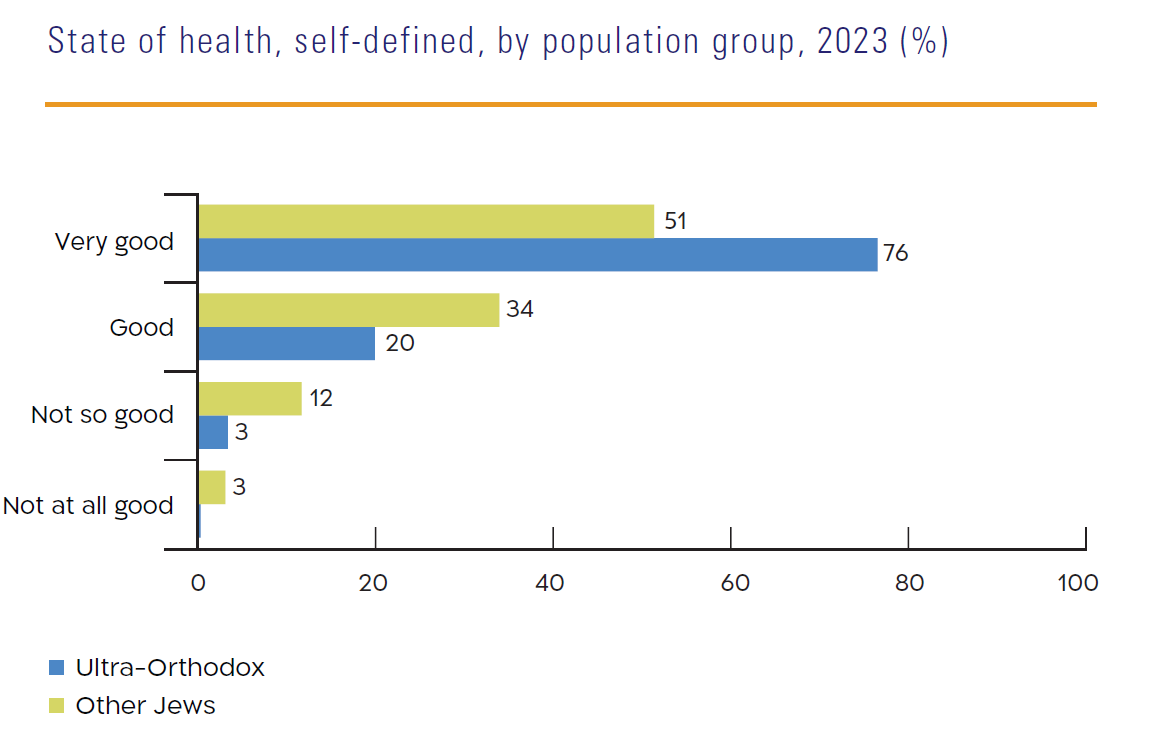
Since 2010, there has been a decline in the share of Haredim who report leading a healthy lifestyle, contrasting with a rise in the equivalent share of non-Haredi Jews. Around half (49%) of Haredim say that they engage in physical activity (down from 53% in 2010), smaller than the equivalent share of the non-Jewish Haredi population (61%). Similarly, 41% of Haredim engage in intensive physical activity more than 4 hours per week, compared to 61% of non-Haredi Jews.
39% of Haredim report being of a healthy weight (down from 53% in 2010), compared to 46% of non-Haredi Jews (47% in 2010).

Regarding smoking, 9% of Haredim smoke, compared to 21% of non-Haredi Jews. The share of smokers in the ultra-Orthodox population has remained relatively stable (8% in 2010), while it has declined in the non-Haredi Jewish population (from 27% in 2010).
Regarding insurance, an overwhelming majority of the ultra-Orthodox population hold complementary health insurance from their health fund (83%), though this is still a lower rate than in the non-Haredi Jewish population (92%). However, only 28% of Haredim have private health insurance, compared to 54% of the non-Haredi Jewish population.
The following chart provides a big picture summary of various health indicators in recent years.
